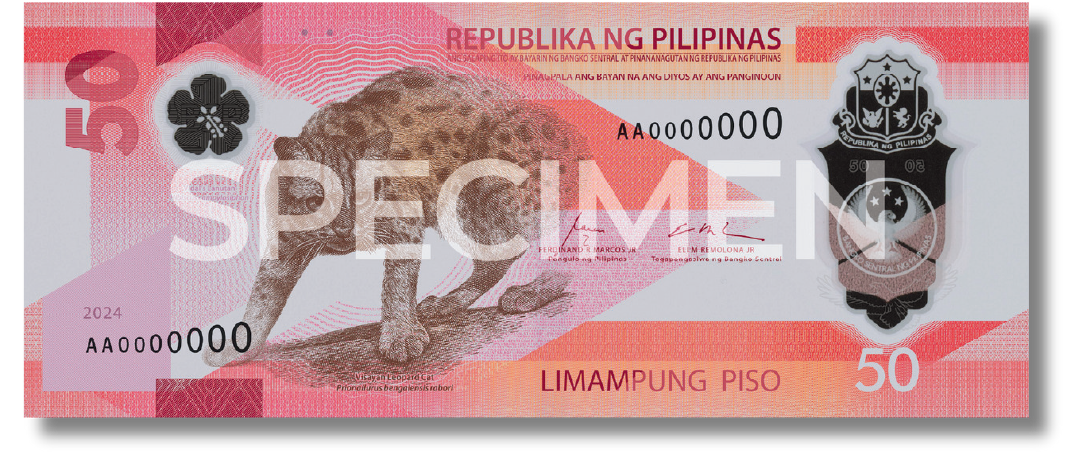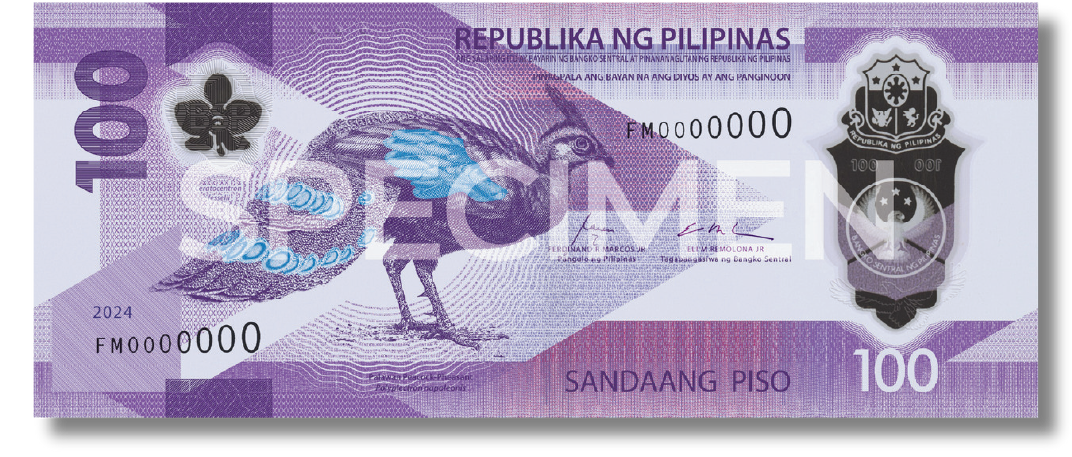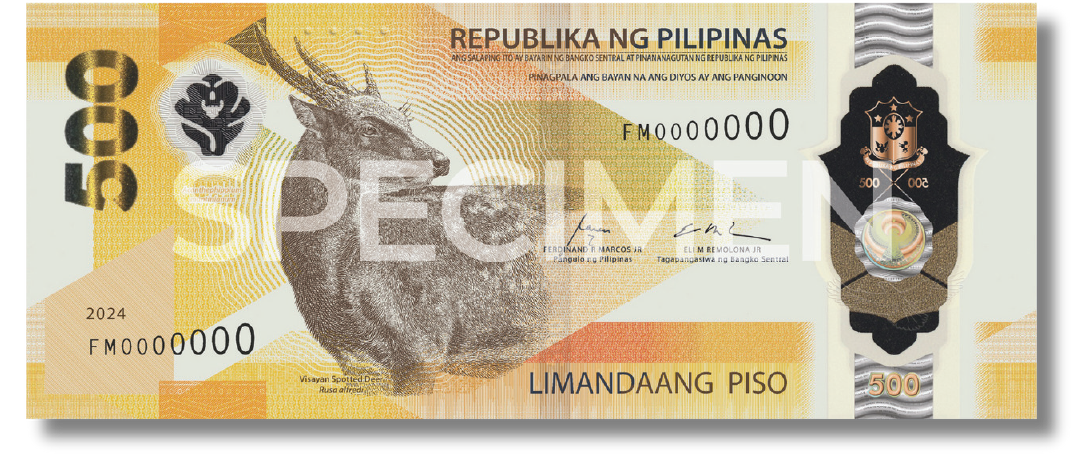The Bangko Sentral ng Pilipinas has issued three new denominations on GUARDIAN™ substrate to complete its first full family of polymer banknotes in a major milestone for the Philippines.
The PHP50, PHP100 and PHP500 banknotes entered circulation in December 2024, building on the success of the PHP1000, which was issued in April 2022 to provide proof of performance in the cash cycle.
This landmark full polymer series was a collaboration between Bangko Sentral ng Pilipinas and Note Printing Australia, with GUARDIAN substrate now being supplied for all denominations.
CCL Secure, Vice President & Managing Director, Neil Sanders, said “Congratulations to the central bank and Note Printing Australia on an outstanding series. CCL Secure is proud to provide world-leading substrate that supports the central bank’s vision for better banknotes that are stronger, safer, cleaner and greener.”
Durability Reduces Cost and Emissions
At an unveiling ceremony on December 19, the Filipino President Ferdinand R. Marcos outlined the independent evidence that has informed the country’s decision to transition to polymer.
“Unlike paper bills, which wear out after about a year or a year and a half, polymer banknotes can last up to seven and a half years, five times longer.
“That means that we no longer need to replace them as often, saving money, cutting down on waste, and making a meaningful contribution to protecting the environment.”



Many of these benefits have been locally quantified using data collected as part of the two-year pilot project of polymer PHP1000 notes, undertaken as part of the due diligence process.
For example, a study by De La Salle University calculated the carbon emissions from polymer PHP1000 notes was 38.4 per cent lower compared to currently circulating paper substrate.
Design and Security
The sustainability benefits of the new polymer notes are also reflected in their design. Each of the four denominations in the series features unique, native and endangered species that showcase the Philippines’ biodiversity, symbolise Filipino identity, and cultivate national pride.
From the Philippine eagle and sampaguita flower (PHP1000) to the Visayan leopard cat and Vidal’s lanutan (PHP50), each denomination features a new set of floral and faunal elements.
The series also retains elements from the old paper banknotes, highlighting iconic landscapes and artisanal crafts, including a volcano, lake, reef, flora, fauna, embroidery and weave designs.
These symbols of national culture and pride are seamlessly integrated with large, complex windows that are the hallmark of banknotes printed on GUARDIAN substrate. They contain a range of complementary features embedded within the substrate itself as a part of production.
The Bangko Sentral ng Pilipinas anticipates the transition to polymer substrate will facilitate significant reductions in counterfeit rates, in line with the global experience of central banks.
“Countries that shifted to polymer banknotes – Canada, Australia, New Zealand, Malaysia, Mexico, Fiji, and Vietnam – all saw a decline in counterfeiting cases.”
Bangko Sentral ng Pilipinas
Each of the four denominations also includes CCL Secure’s IRISWITCH™ feature, which appears transparent when viewed straight on, but reveals a pearlescent colour when the note is tilted.
The ‘switch’ colour has been designed to match the primary colour of a given denomination, which is blue for the PHP1000, gold for the PHP500, lilac for the PHP100 and red for the PHP50.
A wide range of third-party security features have also been applied to the GUARDIAN substrate.
Polymer Banknotes are Cleaner
Beyond security, sustainability, and reductions in cost, Bangko Sentral ng Pilipinas cites public demand for more hygienic banknotes as an urgent driver of their decision to polymerise.
As part of the transition process, the Philippines Department of Health conducted an evidence review that confirmed bacteria and viruses including COVID-19 die off faster on polymer notes.
“The First Philippine Polymer Banknote Series is significantly cleaner than paper banknotes due to its smooth and nonabsorptive surface, which is resistant to water, oil, and dirt.”
Bangko Sentral ng Pilipinas
Polymer banknotes can also be sanitised with less risk of damage, the central bank notes. This is particularly important in cash cycles characterised by heat and humidity, like the Philippines.
New Notes Now Circulating
Polymer PHP50, PHP100, and PHP500 banknotes are now being enjoyed by Filipino consumers, having entered circulation on 23 December 2024. They will co‑circulate alongside paper notes.
CCL Secure congratulates Bangko Sentral ng Pilipinas, Note Printing Australia, and other stakeholders on a fantastic collaboration, which President Marcos, Jr. has rightly recognised as a historic milestone. We are proud to provide GUARDIAN in support of the central bank’s vision.